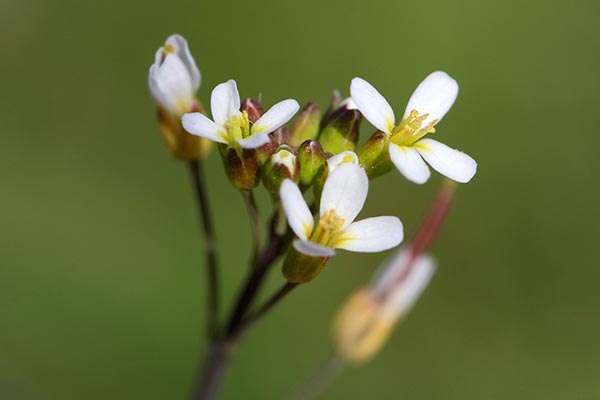
Exploring the molecular process behind vernalization
Vernalization is the initiation of a plant's flowering process by prolonged exposure to low temperatures. In Arabidopsis, a genus of plants related to cabbage, the floral repressor FLC acts as a brake to flowering and is silenced during vernalization, "lifting the brake" on flowering in time for spring.
As the antisense of FLC – meaning it lies on the other strand of the DNA opposite the gene – COOLAIR has the ability to bind to FLC and influence its activity. But less is clear about its role and studies are scant about how seasonal changes affect vernalization.
Researchers from the John Innes Center in the U.K. explored these gaps in knowledge by studying various species of Arabidopsis grown in different climates. They measured how much COOLAIR is turned on in three different field sites with varying winter conditions. One was in Norwich, U.K., another was in south Sweden and another was in subarctic north Sweden.
While COOLAIR levels vary between different species in different locations, the researchers found that all the plants shared something in common: COOLAIR levels peaked in all of them after the temperature dropped to below zero for the first time in the fall.
The researchers then simulated natural temperature changes using temperature-controlled chambers to investigate the increased expression of COOLAIR under freezing conditions. They found that COOLAIR expression increased within an hour of freezing and peaked roughly eight hours afterward. FLC levels, on the other hand, decreased slightly right after temperatures hit below zero.
One of the plants was a mutant that produced low levels of FLC and high levels of COOLAIR even when the weather was warm. The researchers edited the plant's FLC to switch off COOLAIR and found that the FLC was no longer suppressed.
These findings show that the first seasonal frost in the fall is an important indicator for the arrival of winter. According to co-lead author Yusheng Zhao, the rise in COOLAIR levels right after the first frost could explain how plants use environmental cues to initiate the silencing of FLC and align their flowering with spring.
Co-author Caroline Dean also suggested that the molecular process underpinning plants' ability to sense the temperature is "tunable," which makes plants like Arabidopsis quite adaptable to changes to the climate. (Related: Stunned scientists discover that plants ‘learn like humans’ and intelligently adapt to their environments ... are plants conscious?)
"From the plant's point of view it gives you a tunable way of shutting off FLC. Any modulation of antisense will switch off sense and from an evolutionary perspective, depending on how efficiently or how fast this happens, and how many cells it happens in, you then have a way of dialing the brake up and down among cells," she said.
What is vernalization?
Many plant species need vernalization to flower or bear fruit. Apple and peach trees, tulips and daffodils and many other plants will not thrive without vernalization.
Plants with vernalization requirements must be exposed to cold temperatures below a certain threshold within a certain number of days. The required temperatures and lengths of chilling depend on the plant species and variety. This is why it's important to plant varieties that are suited to the climate as doing so yields the best results.
However, vernalization can also be done artificially by storing certain bulbs in the refrigerator for several months to imitate a winter chilling period. This is known as "forcing" the bulbs.
Learn more about plants and their amazing biology at Ecology.news.
Sources include:
Please contact us for more information.























